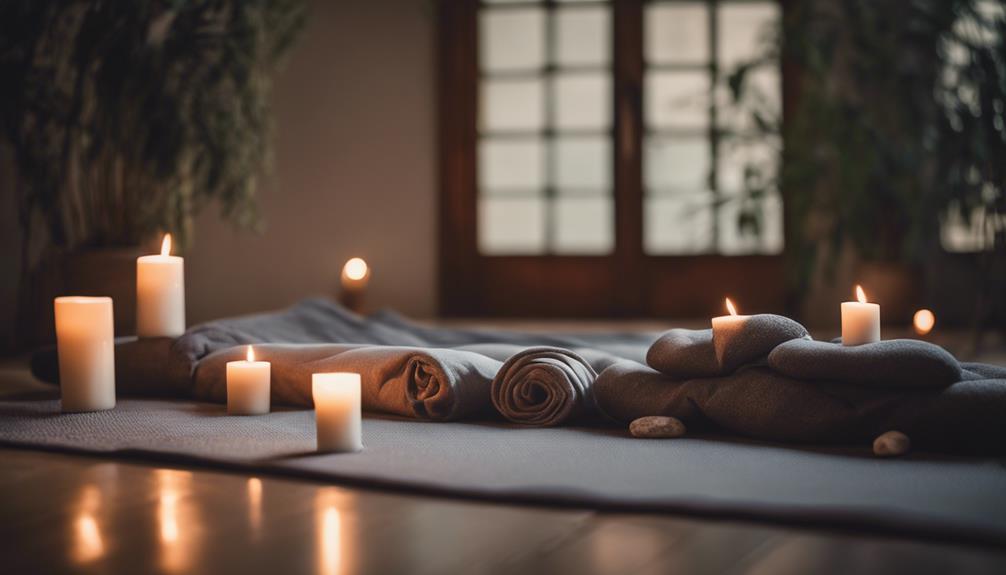Yoga is an ancient practice that has evolved over thousands of years, giving rise to a variety of styles and disciplines, each with its own unique philosophy and approach. From the physical to the spiritual, yoga encompasses a wide range of techniques designed to promote well-being, flexibility, strength, and mindfulness. As practitioners delve deeper into their yoga journey, they often find themselves exploring different styles to discover what resonates best with their goals and lifestyle. This article will explore 20 different types of yoga, providing an overview of each style to help you navigate the diverse world of yoga practices.
In this exploration, we will touch upon various aspects of each yoga style, such as their origins, primary focuses, and the benefits they offer. Whether you are a beginner looking to start your journey or an experienced practitioner seeking to deepen your practice, understanding these diverse forms can be enlightening. Let’s dive into the fascinating world of yoga and discover the different styles that can enhance physical and mental well-being.Downey Yoga
Hatha Yoga: The Foundation of Physical Postures
Hatha Yoga is often considered the gateway to all other yoga styles. Rooted in the ancient texts of yoga, it emphasizes the physical postures (asanas) and breathing techniques (pranayama) that form the foundation of yoga practice. Hatha classes typically include a balanced mix of poses that build strength, flexibility, and balance while incorporating breath awareness. This style is accessible to practitioners of all levels, making it an excellent starting point for those new to yoga.
The practice of Hatha Yoga encourages self-awareness through movement and breath, helping individuals to connect with their bodies and minds. It promotes relaxation and mindfulness, allowing practitioners to cultivate a sense of peace and calmness. With its focus on the basics, Hatha Yoga serves as a stepping stone for those who may want to explore more advanced styles in the future.
Vinyasa Yoga: Flowing with Breath and Movement
Vinyasa Yoga is characterized by the seamless transition between postures, often synchronized with the breath. This dynamic style of yoga emphasizes the flow of movement, allowing practitioners to experience a meditative state through continuous motion. Vinyasa classes can vary in intensity, with some focusing on strength-building sequences while others may emphasize fluidity and grace.
The interconnectedness of breath and movement in Vinyasa Yoga fosters a deep sense of awareness and presence. This style is suitable for individuals who enjoy an energetic workout and prefer a less rigid structure compared to traditional styles. By engaging both the body and mind, Vinyasa not only enhances physical fitness but also promotes emotional balance and mental clarity.
Ashtanga Yoga: The Eightfold Path to Spiritual Growth
Ashtanga Yoga is a rigorous and structured practice that follows a specific sequence of postures and breath control techniques. It is based on the eight limbs of yoga as outlined by the sage Patanjali in the Yoga Sutras. Ashtanga practitioners follow a set series of poses that are linked together through vinyasa, requiring stamina and concentration. This style is often recommended for those seeking a disciplined and physically demanding practice.
In addition to its physical challenges, Ashtanga Yoga emphasizes personal growth through the cultivation of discipline and mindfulness. The rigorous nature of the practice encourages practitioners to develop a deeper understanding of themselves, both physically and mentally. Ashtanga Yoga can be transformative, allowing individuals to experience profound shifts in their lives as they progress along their yoga journey.
Iyengar Yoga: Precision and Alignment in Practice
Iyengar Yoga is renowned for its meticulous attention to detail, alignment, and use of props to support practitioners in achieving precise postures. Founded by B.K.S. Iyengar, this style focuses on the correct alignment of the body, making it suitable for individuals of all levels, including those with physical limitations or injuries. Iyengar classes often involve longer holds in poses, which helps to deepen understanding and awareness of each posture.
The use of props—such as blocks, belts, and blankets—allows practitioners to explore the full range of a pose without straining. Iyengar Yoga fosters not just physical strength and flexibility but also mental concentration and stability. Practitioners often find that the discipline and precision required in this style lead to a greater sense of self-awareness and mindfulness, both on and off the mat.
Kundalini Yoga: Awaken Your Inner Energy and Consciousness
Kundalini Yoga emphasizes the awakening of the dormant energy lying at the base of the spine, known as kundalini. This practice combines postures, breath work, chanting, and meditation to facilitate spiritual growth and awareness. Kundalini sessions often follow a structured format that includes a warm-up, specific kriyas (sets of exercises), and a meditation or relaxation phase.
The focus of Kundalini Yoga is on the energetic and spiritual aspects of practice, aiming to elevate consciousness and promote self-discovery. The blend of physical and spiritual elements can lead to profound insights and transformations, making it a unique and powerful practice for those drawn to exploring their inner selves. The chanting and meditation components further enhance the experience, creating a holistic approach to well-being.
Yin Yoga: Deep Stretching and Mindful Relaxation
Yin Yoga is a slow-paced style that involves holding postures for an extended period, typically between three to five minutes or more. This practice targets the connective tissues, such as ligaments, tendons, and fascia, promoting flexibility and joint health. Yin Yoga encourages practitioners to cultivate patience and mindfulness, making it an ideal complement to more dynamic styles.
The meditative quality of Yin Yoga allows for deep relaxation and introspection. By surrendering to the poses and focusing on the breath, practitioners can connect with their inner selves and release physical and emotional tension. Yin Yoga is especially beneficial for those seeking to balance the fast-paced demands of daily life with a nurturing and restorative practice.
Restorative Yoga: Healing Through Gentle Support
Restorative Yoga is a gentle and nurturing practice that focuses on relaxation and healing. It utilizes props to support the body in restful poses, allowing for deep relaxation and release of tension. This style encourages practitioners to slow down and cultivate a sense of peace, making it ideal for those recovering from stress, injury, or illness.
The emphasis on rest and rejuvenation in Restorative Yoga helps to activate the body’s natural healing processes. Practitioners often experience a profound sense of calm and restoration, both physically and mentally. This style of yoga is perfect for individuals looking to unwind and recharge, offering a sanctuary from the busyness of life.
Bikram Yoga: The Hot Practice for Detoxification
Bikram Yoga is a specific style that involves practicing a fixed sequence of 26 postures in a heated room, typically set to a temperature of around 105°F (40°C). This intense heat promotes detoxification through perspiration and enhances flexibility in the muscles and joints. Bikram Yoga’s structured format makes it accessible for beginners while providing a challenging workout for more experienced practitioners.
The benefits of practicing Bikram Yoga extend beyond physical fitness. The heat encourages deeper stretching and promotes mental focus, helping practitioners to cultivate a disciplined mindset. Many find that the unique combination of heat and movement provides an invigorating experience, fostering both physical strength and emotional resilience.
The diverse world of yoga offers a wealth of practices that cater to various needs, preferences, and goals. From the foundational elements of Hatha Yoga to the energetic flow of Vinyasa and the meditative depth of Yin Yoga, each style presents unique opportunities for growth and transformation. As you explore these 20 types of yoga, consider your individual interests and lifestyle to find the practice that resonates with you.
Whether you seek physical fitness, mental clarity, or spiritual awakening, there is a yoga style suited to your journey. The beauty of yoga lies in its adaptability, allowing practitioners to discover their path at their own pace. Embrace the journey of self-discovery and well-being, and may your exploration of yoga lead to a fulfilling and enriching practice.


